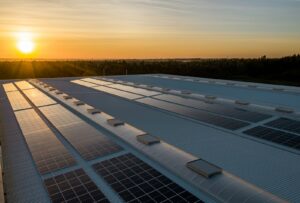The closure of the Feed in-Tariff this Sunday, 31st March, is a devastating blow to the government’s own aim of creating a nation that has better energy security and efficiency, says Emma Bridge, chief executive of Community Energy England, the membership body representing over 250 local community energy generation schemes and support projects.
Now with the early closure of the over 50kw PV Feed-in Tariff band announced by Ofgem, at least 30 planned community energy projects have been stalled.
Not only does this mean less clean, green energy, it also frustrates the largely voluntary teams behind these projects who have worked so hard to bring them to this point. Projects like the community benefit society in Staffordshire developing a 125kWp solar farm and battery storage, whose aim was to invest 50% of their profits into neighbourhood community projects and fuel poverty alleviation initiatives, to a 130kw rooftop solar array on a school in London which would have provided discounted electricity to the school, given a small interest return to community investors (3-4% return on their investment), engaged and educated pupils by linking the panels to the STEM curriculum, and surplus income going into a community benefit fund.
The closure of the Feed-in Tariff leaves community energy, and small scale renewable energy schemes in limbo, forced to return surplus energy supplies to the grid without any compensation, whilst Government determines its next policy. Alongside Community Energy Scotland, and Community Energy Wales, we have responded to the Government consultation on the proposed Smart Export Guarantee (SEG), urging the Department for Business, Energy & Industrial Strategy to develop measures specifically designed to enable new community energy projects to meet the potential they have to drive the development of a more localised smart energy system, because we concluded that the SEG in its current format does not offer a viable way forward for community energy projects. We have offered to assist BEIS in developing a ‘Community Energy SEG’ to give the boost to the sector that it rightly deserves.
And we’re backing the Green Alliance’s Community Energy manifesto, which calls on the Government to recognise their role in meeting the UK’s aim for a low carbon energy system, to change its approach and help local energy projects to thrive and achieve their full potential, including creating new routes to market for community supplied energy.
As a sector, we won’t stand still whilst we wait for government to act. We’re resilient and innovative, so as we continue to lobby, we’ll also be looking at how we collaborate to ensure we push forward and deliver community energy in new ways.
If this Government is serious about tackling climate change, and supporting its citizens to play their part in reducing carbon emissions, then we need to see a firm commitment from them about what alternative support they will offer to the community energy sector in the wake of the Feed-in Tariff closure.
There is a growing number of people supporting community energy schemes – they are precisely the community champions the Government needs to help spread the message about the benefits of everything from renewable energy, smart metres, better-insulated homes and shifting to electric powered vehicles. Let’s face it, big energy companies and politicians aren’t always the people to influence a renewable energy sceptic, but a trusted neighbour, local headteacher or community pub landlord might well be better placed to explain how renewable energy can really make a difference















